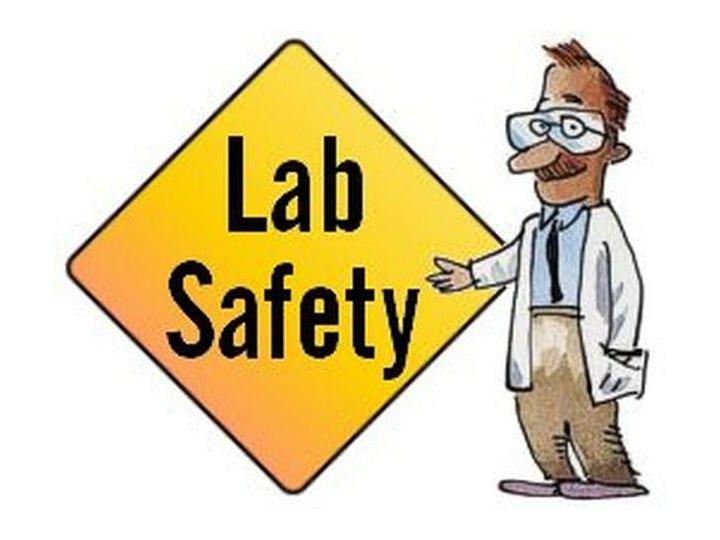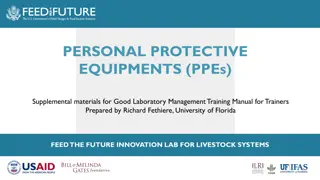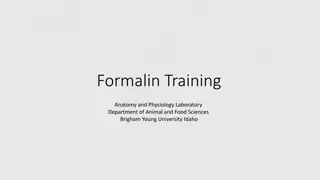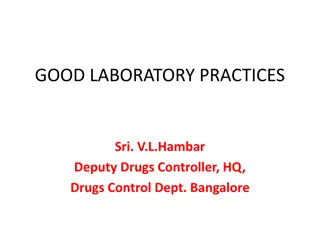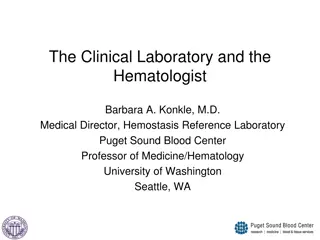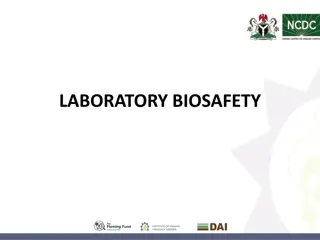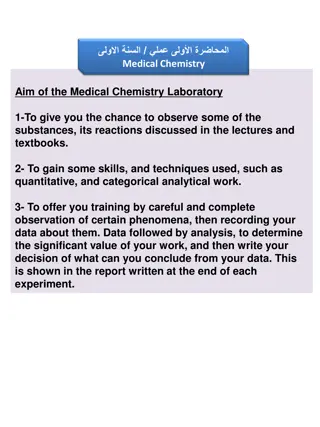Laboratory Safety Measures and Practices
Essential safety measures in laboratories include wearing lab coats, gloves, and masks, hand washing, avoiding eating or drinking inside the lab, ensuring first aid supplies are available, and proper ventilation. It's crucial to follow protocols for handling chemicals, adhere to safety signs, and clean up before leaving the lab to ensure a safe environment for all.
Download Presentation

Please find below an Image/Link to download the presentation.
The content on the website is provided AS IS for your information and personal use only. It may not be sold, licensed, or shared on other websites without obtaining consent from the author.If you encounter any issues during the download, it is possible that the publisher has removed the file from their server.
You are allowed to download the files provided on this website for personal or commercial use, subject to the condition that they are used lawfully. All files are the property of their respective owners.
The content on the website is provided AS IS for your information and personal use only. It may not be sold, licensed, or shared on other websites without obtaining consent from the author.
E N D
Presentation Transcript
What are the most important safety measures in laboratories 1-The lab coat should be worn 2-Gloves and masks should be worn in dangerous trials 3-Hand washing after testing 4-Conduct experiments inside the poison booth 5-Avoid wearing open shoes because chemicals may fall directly on the skin of the foot. 2 1
6- Take care not to eat or drink in the laboratory. 7- Ensure the presence of first aid bags. 8- Ensure the presence of the necessary detergents, such as soaps, laundries, and tissues. 9- Attention to the existence of sources to ventilate the place. Avoid smoking in the laboratory. 10-
Before leaving the laboratory 1- Clean the workplace. 2-Wash the glass used in the work. 3-Close all unnecessary appliances and equipment (electricity, water, gas, vacuum). 4-It removes any leftovers with chemicals lying o the ground. 5-Leave the windows for the gas extraction cabinet open. 6-Turn off all lighting points. 7- Close the laboratory doors
Chemical tools 1- beaker 2- cylinder 3- test tube 4-round 5-rack 6-water bath 7-tonk
8-dropper 9- funnel 10-pipete 11- burette 12- Volumetric flask
